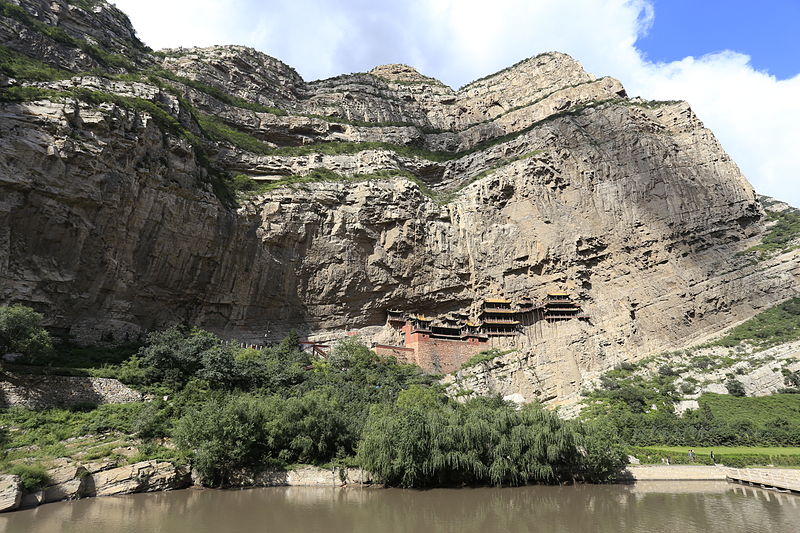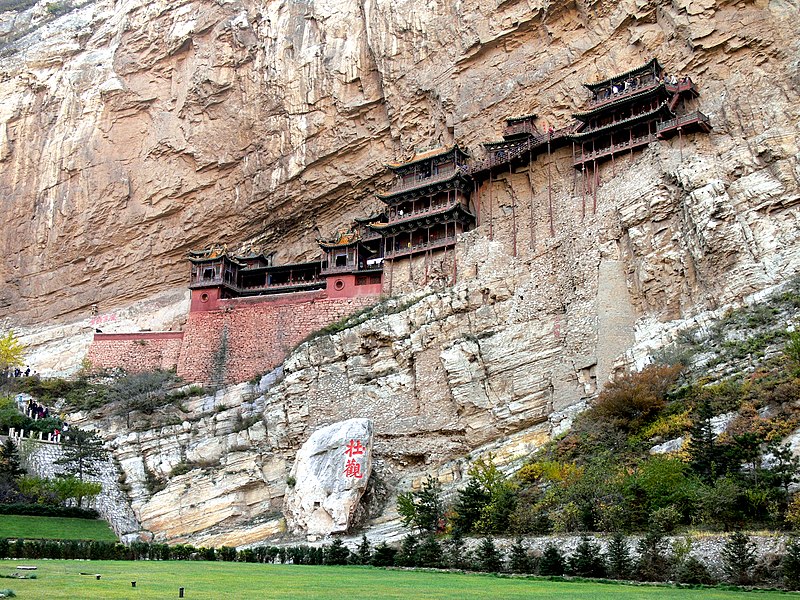The Hanging Temple, also known as Xuankong Temple, is a remarkable architectural marvel perched precariously on a sheer cliff face in the mountains of Datong, Shanxi Province, China. This awe-inspiring structure, suspended more than 50 meters (164 feet) above the ground, is a testament to the ingenuity, craftsmanship, and spiritual devotion of ancient Chinese builders and Buddhist monks.

Dating back over 1,500 years to the Northern Wei Dynasty (386-534 AD), the Hanging Temple is believed to have been founded by a monk named Liao Ran during the reign of Emperor Xiaowen. Built into the natural crevices and caves of the cliff face, the temple complex consists of a series of wooden pavilions, walkways, and halls interconnected by a network of corridors and staircases.

What makes the Hanging Temple truly remarkable is its unique architectural design and engineering feat. Unlike traditional Buddhist temples, which are typically constructed on flat ground or atop hills, the Hanging Temple is suspended from the cliffs using a system of wooden beams, brackets, and crossbeams anchored into the rock. This innovative construction method allows the temple to cling to the sheer cliff face, defying gravity and creating a striking visual spectacle.

Despite its precarious location, the Hanging Temple has stood firm against the ravages of time and the forces of nature for over a millennium. The temple’s wooden framework, constructed from sturdy timber beams and reinforced with iron chains and brackets, has withstood earthquakes, landslides, and harsh weather conditions, a testament to the skill and craftsmanship of its builders.
The Hanging Temple is not only an architectural marvel but also a sacred sanctuary dedicated to Buddhism, Taoism, and Confucianism. Within its halls and pavilions, visitors can find a diverse array of religious statues, sculptures, and artifacts, including images of the Buddha, bodhisattvas, and other deities. The temple also features altars, shrines, and prayer halls where worshippers can pay their respects, offer prayers, and seek blessings for health, prosperity, and happiness.
In addition to its religious significance, the Hanging Temple is renowned for its harmonious blend of architectural styles and artistic influences. The temple’s design incorporates elements of traditional Chinese, Indian, and Central Asian architecture, reflecting the multicultural heritage of Buddhism and the diverse cultural exchanges that occurred along the ancient Silk Road trade routes. This eclectic fusion of styles is evident in the temple’s ornate carvings, decorative motifs, and symbolic imagery, which create a sense of unity and universality among different religious traditions.
Today, the Hanging Temple continues to attract visitors from around the world, drawn by its breathtaking beauty, historical significance, and spiritual resonance. Despite its remote location and challenging terrain, the temple receives thousands of pilgrims, tourists, and adventurers each year, eager to experience its mystical aura and explore its labyrinthine corridors.
As a symbol of human perseverance, spiritual devotion, and cultural heritage, the Hanging Temple stands as a timeless monument to the enduring legacy of ancient China and the enduring power of faith to transcend the bounds of space and time. Whether viewed from afar against the backdrop of the rugged mountains or explored up close amidst its towering wooden structures, the Hanging Temple inspires awe, wonder, and reverence in all who behold its magnificence.

